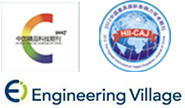搅拌摩擦加工法制备碳纳米管增强铝基复合材料
Carbon nanotubes reinforced aluminum matrix composites by friction stir processing
-
摘要: 为了制备晶粒细小、 组织均匀的复合材料, 提高材料的力学性能, 用搅拌摩擦加工法制备碳纳米管增强铝基复合材料, 并对不同碳纳米管含量的复合材料的微观结构、 拉伸性能及断口形貌进行分析。结果表明: 碳纳米管添加到铝基体中, 搅拌摩擦中心区晶粒细小, 碳纳米管与基体之间结合良好, 未发现明显的缺陷; 碳纳米管对基材有明显的强化作用, 铝基复合材料抗拉强度随着碳纳米管含量的增加而提高; 碳纳米管体积分数为7%时, 抗拉强度达到201 MPa, 是基材的2.2倍; 复合材料在宏观上呈现脆性断裂特征, 微观上呈现韧性断裂特征, 其断裂机制以CNTs/Al界面脱粘、 基体撕裂和增强体断裂为主。Abstract: In order to prepare composites with fine grains, uniform microstructure, and improving the mechanics performance significantly, different contents of carbon nanotubes (CNTs) reinforced aluminum matrix composites were prepared by friction stir processing (FSP). The microstructure, tensile properties and morphologies of tensile fracture surface were analyzed. The results show that CNTs are embedded in the aluminum matrix. The grain size is fine in the center of the friction stir zone. CNTs and matrix have a good combination. There are no obvious defects in the composites. CNTs improve the mechanics performance of the matrix. The tensile strength of aluminum matrix increases with the increasing of CNTs contents. The tensile strength reaches to 201 MPa when the volume fraction of CNTs is 7%, which is 2.2 times than that of matrix. The composites show the characteristics of brittle fracture at the macrostructure and plastic fracture at the microstructure. The fracture mechanism dominates by CNTs/Al interface debonding, matrix tearing and reinforced fiber fracturing.


 下载:
下载: